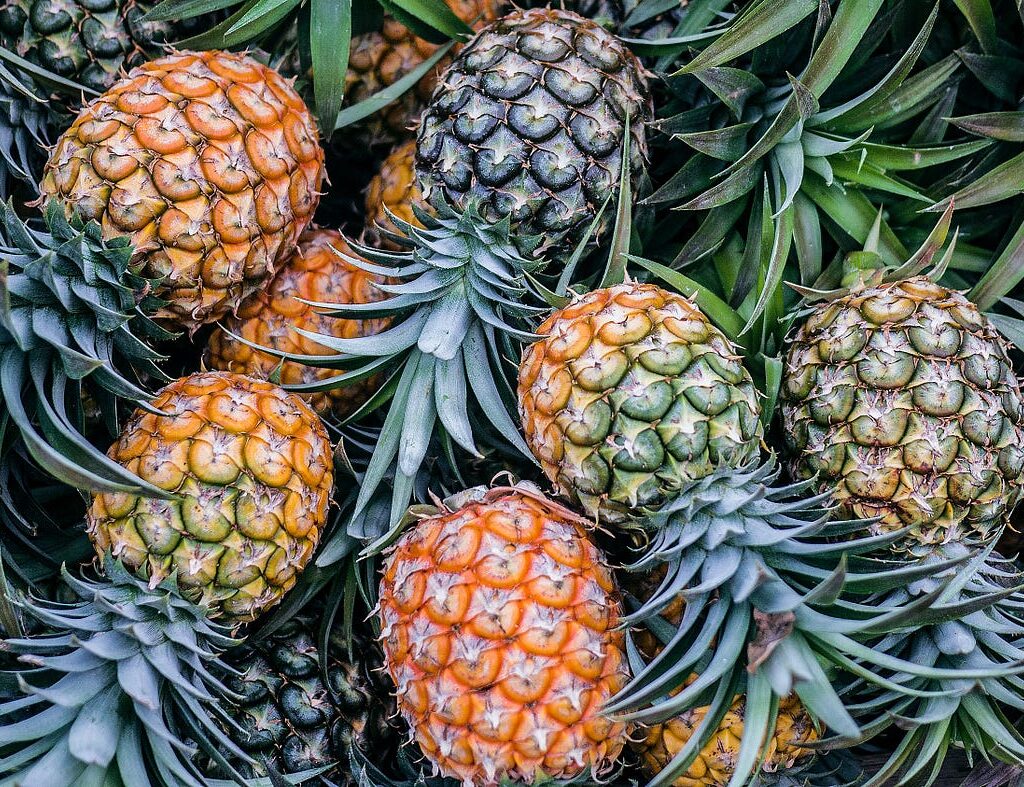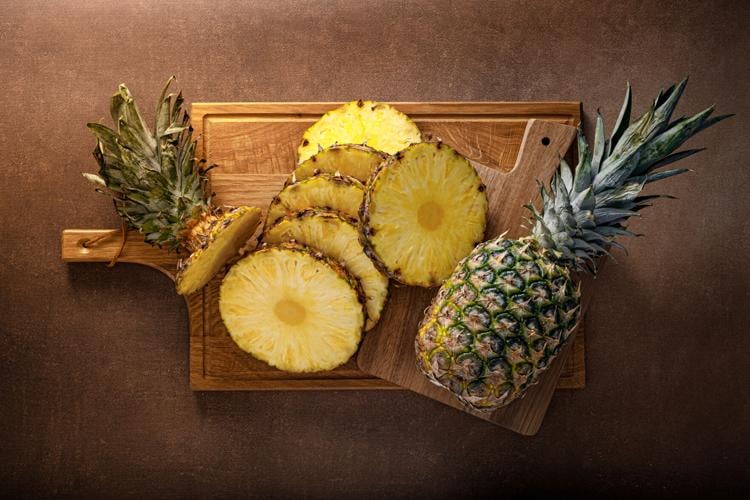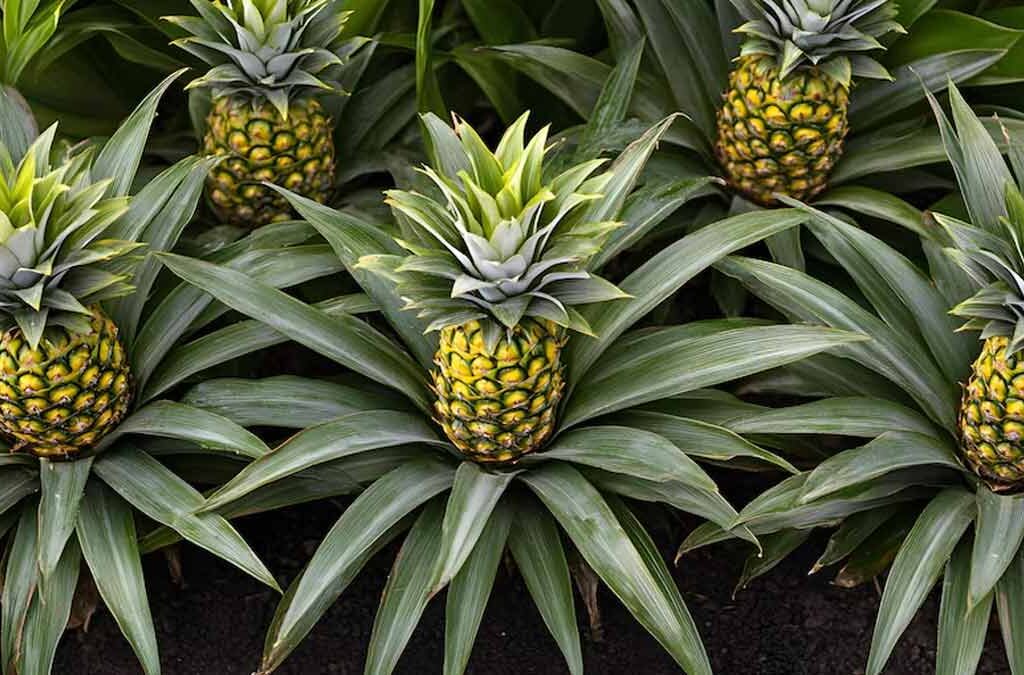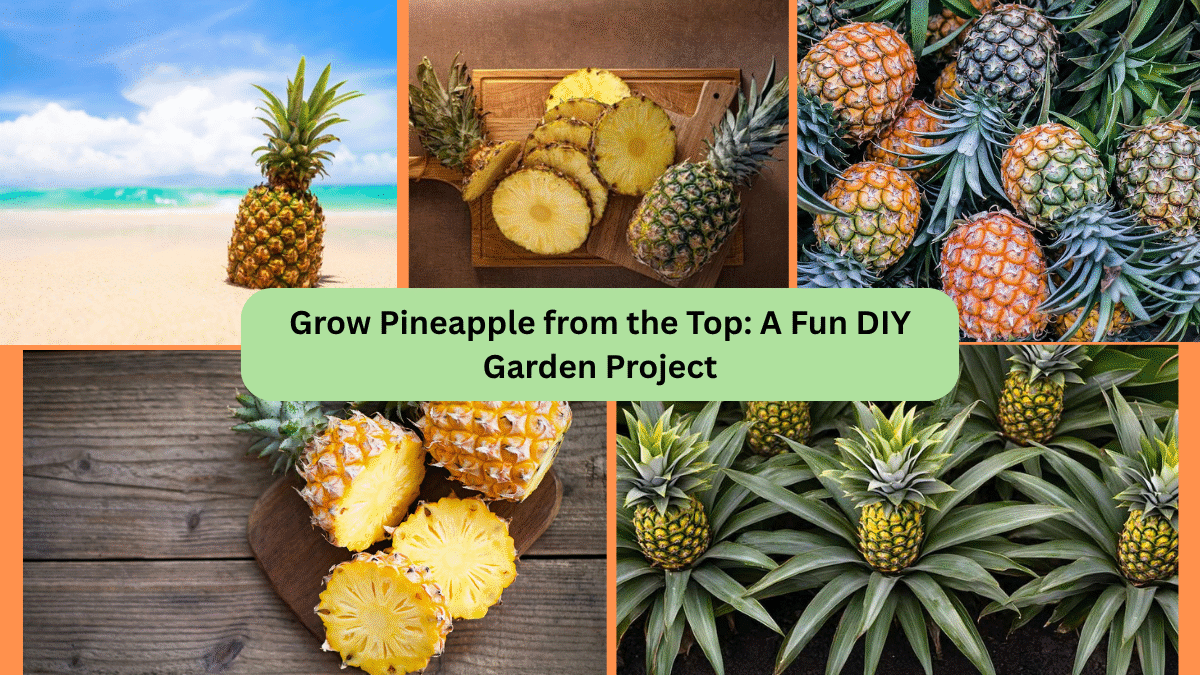If you’ve ever sliced up a fresh, juicy pineapple and tossed out the leafy top without a second thought — stop right there. Did you know that the crown of a pineapple can grow into a whole new plant? Yes — that spiky green top isn’t just for show; it holds the potential for a sweet, homegrown harvest.
Growing a pineapple from the top is one of the most fun, budget-friendly, and beginner-friendly gardening projects you can try. Whether you have a sunny backyard, balcony, or even just a bright windowsill, this tropical plant can thrive with a little care and patience.
In this comprehensive guide, we’ll cover everything you need to know about how to grow a pineapple from the top, from preparing the crown to nurturing it into a fruit-producing plant.
Why Grow Pineapples from the Top?

There are several reasons why this simple project is worth trying:
- It’s free — you only need a fresh pineapple and a pot of soil.
- Fun for the whole family — it’s a hands-on project that even kids love watching progress.
- Tropical decor — the long, arching leaves add a lush, exotic touch to your space.
- Delicious reward — with a little patience, you’ll be enjoying homegrown pineapple in about 18–24 months.
It’s also an excellent way to reduce waste and make the most of your grocery-store purchases.
What You’ll Need
Before you begin, gather these essentials:
- 1 fresh, ripe pineapple with firm, green leaves
- A sharp knife
- A small bowl or glass for water rooting (optional)
- A pot with drainage holes or a well-draining garden spot
- Light, sandy soil or cactus potting mix
- Rooting hormone (optional)
How to Choose the Best Pineapple for Planting

Your project’s success starts with picking a good pineapple:
- Look for one with vibrant, green leaves without browning or wilting.
- The fruit itself should be ripe — slightly soft to the touch with a sweet aroma, but avoid overripe or mushy fruits.
- Check the base of the crown to ensure there’s no mold or rot.
Preparing the Pineapple Top
Follow these easy steps to prepare the crown for planting:
- Twist or cut off the leafy top — firmly grasp the crown and twist it off the fruit, or slice off the top about an inch below the leaves.
- Remove excess fruit flesh — carefully trim away remaining fruit from the base of the crown to avoid rot.
- Peel off the lower leaves — strip off about 5–10 of the bottom leaves to expose 1–2 inches of the stem.
- Let it dry — allow the crown to air dry for 1–2 days in a shady, well-ventilated area. This healing period helps prevent rotting when planted.
Optional: Dip the cut end into rooting hormone powder for faster root development, though this step isn’t essential.
Rooting the Pineapple Top

You can either root your pineapple top in water or plant it directly in soil
Water Method:
- Place the prepared crown in a glass of water, ensuring only the base of the stem is submerged.
- Change the water every 2–3 days to keep it fresh.
- Within 2–3 weeks, you should see white roots sprouting.
Soil Method:
- Plant the dried, prepared crown directly into a small pot filled with well-draining, sandy soil.
- Water lightly and place in a warm, bright location.
- After 2–3 weeks, gently tug the crown. If there’s resistance, roots have begun forming.
Both methods work well, though water rooting lets you visually monitor progress.
Best Soil and Potting Tips
Pineapples dislike soggy soil and thrive in sandy, well-draining conditions. Use a cactus mix or make your own blend of:
- 1 part potting soil
- 1 part coarse sand or perlite
- 1 part organic compost
Choose a pot with ample drainage holes. Start with a 6–8 inch pot, and move to a larger one as the plant grows.
Sunlight and Temperature Requirements

Pineapples are tropical sun-lovers and need plenty of bright light.
Ideal conditions:
- 6–8 hours of direct sunlight daily
- Daytime temperatures of 70–85°F (21–29°C)
- Protect from frost and move indoors if temperatures dip below 50°F (10°C)
A south-facing window, balcony, or sunny garden spot is perfect.
Watering Guidelines
Pineapples are fairly drought-tolerant but require consistent moisture during the growing season.
Watering tips:
- Keep soil lightly moist but never soggy.
- Pour a small amount of water into the central rosette.
- In winter, reduce watering as growth slows.
- Always allow the top inch of soil to dry between waterings.
Avoid overwatering, which can cause root and crown rot.
Fertilizing for Healthy Growth

For lush leaves and eventual fruit production, pineapples need occasional feeding.
Fertilizing schedule:
- Apply a balanced, water-soluble fertilizer or bromeliad fertilizer every 6–8 weeks during spring and summer.
- Pour diluted fertilizer directly into the soil and the leaf rosette.
Avoid over-fertilizing, which can damage roots and leaves.
How Long Does It Take for a Pineapple to Grow?
Growing a pineapple from a top isn’t instant — it’s a long but rewarding journey.
Timeline:
- 0–3 months: Rooting and establishing leaves
- 3–12 months: Vigorous leaf growth
- 12–18 months: Plant reaches maturity
- 18–24 months: Flower stalk emerges
- 22–28 months: Fruit ripens
Patience is key, but homegrown pineapples are well worth the wait!
How to Know When Your Pineapple is Ripe
A ripe pineapple is a prize for your patience. Here’s how to tell:
- The fruit’s color turns from green to golden yellow at the base.
- It emits a sweet, tropical aroma.
- The shell yields slightly when pressed.
- A central leaf comes out easily with a gentle tug.
Use a sharp knife to harvest the fruit, leaving a short stem attached.
Post-Harvest Care
After harvesting, your pineapple plant might produce side shoots or pups around its base.
Options:
- Leave 1–2 pups to grow as the next fruiting plant.
- Remove extras and root them like the original crown.
A single pineapple plant typically produces one fruit per lifecycle, but its pups will continue the growing cycle.
Common Growing Issues
Yellowing leaves:
Likely from overwatering. Check drainage and reduce watering.
Slow growth:
Usually due to low light or cold temperatures. Move to a sunnier, warmer location.
No fruit after 2 years:
Encourage blooming by placing a ripe apple near the plant and covering both with a plastic bag for 1–2 weeks. The ethylene gas triggers flowering.
Enjoying Your Homegrown Pineapple
Once harvested, your pineapple is perfect for:
- Fresh fruit bowls
- Smoothies and tropical cocktails
- Grilled pineapple rings
- Homemade salsa
- Juicy desserts
Homegrown pineapples often taste sweeter and fresher than store-bought ones — and the satisfaction is unbeatable.
Final Thoughts
Growing a pineapple from the top is a fun, easy, and eco-friendly garden project suitable for beginners and kids alike. Not only does it save kitchen waste, but it also adds a touch of tropical beauty to your home while rewarding you with one of nature’s sweetest fruits.
All it takes is a little patience, bright sunlight, and regular care — and before long, you’ll be proudly enjoying pineapple grown by your own hands.





Leave A Comment